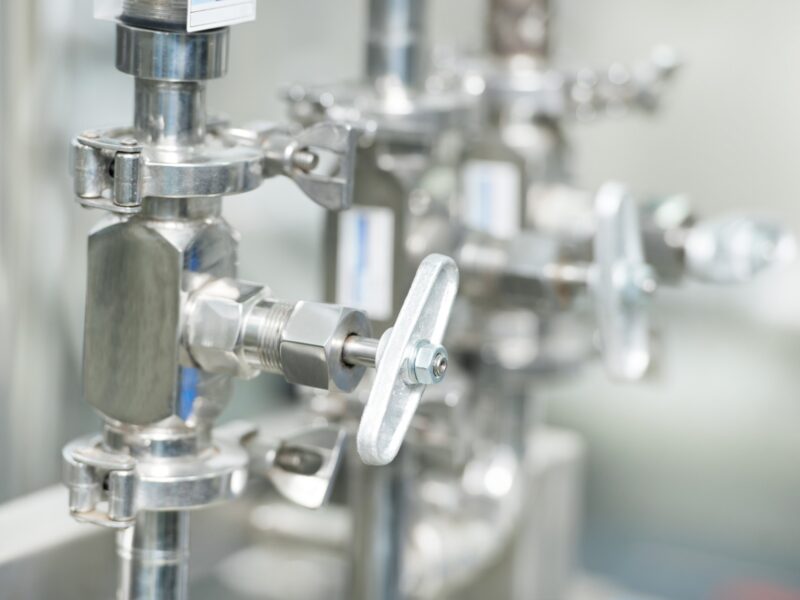
- Gauge valve
- Globe Valve
- Needle Valve
- Check valve
- On Off Ball Valve
- Multiport Valve Manifold
- Five Way Valve Manifold
- Three Way Valve Manifold
- Two Way Valve Manifold
1. Gauge valve
A gauge valve is used to measure a fluid’s pressure. Gauge valves are often installed in systems that require fluid pressure monitoring, such as fuel injectors and hydraulic systems. Gauge valves can be either manually or automatically operated.
Manually operated gauge valves are typically used in low-pressure applications, while automatically operated gauge valves are typically used in high-pressure applications. Gauge valves are available in various designs, including pistons, diaphragm, and ball-type models.
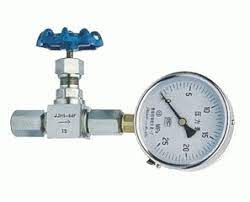
Features
- The most common type of valve is the Gauge Valve, which is used to measure the pressure of a fluid.
- The fluid is allowed to flow through a small hole in the Gauge Valve, and the amount of force is used to calculate the pressure required to close the hole.
- Gauge Valves are often used in applications where fluid pressure needs to be monitored, such as in a water line or a fuel system.
- Gauge Valves are also sometimes used in place of check valves, which allow fluid to flow in one direction but not in another
- Gauge Valves are available in various sizes and can be fitted with various sized holes.
2.Globe Valve
Globe valves are globe-shaped bodies with a removable plug or disc that fits inside the body. The plug has a hole in the center that allows fluid to flow through when the valve opens.
They are used in applications where it is essential to control the flow of liquid or gas. Globe valves are often used in demanding applications such as power plants and chemical plants. Globe valves are also used in some residential and commercial applications.
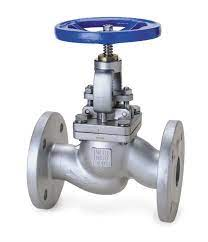
A range of sizes is available for globe valves and configurations. Globe valves are one type of valve among many different types of valves. Some other types of valves include ball valves, butterfly valves, check valves, and gate valves.
Each type of valve has advantages and disadvantages that make it more or less suitable for specific applications. Globe valves have been used for many years and will continue to be used in many different applications due to their versatility.
Features
- Many businesses utilize globe valves for throttling and regulating flow.
- Globe valves consist of a round body with a movable disk-type element that opens and closes to control flow.
- The disk is attached to a stem, connected to an actuator that allows precise control of the valve.
- Globe valves are well suited for applications where the flow needs to be shut off quickly or in situations where regular operation is required.
- Globe valves can be equipped with various actuators, including manual, pneumatic, and electric.
- Globe valves come in a variety of sizes, including sizes and materials to suit any application.
3.Needle Valve
A Needle Valve is a valve with a small needle-like rod used to regulate the flow of fluids. The Needle Valve is usually used in applications where precise flow rate control is required, such as in laboratory and medical equipment.
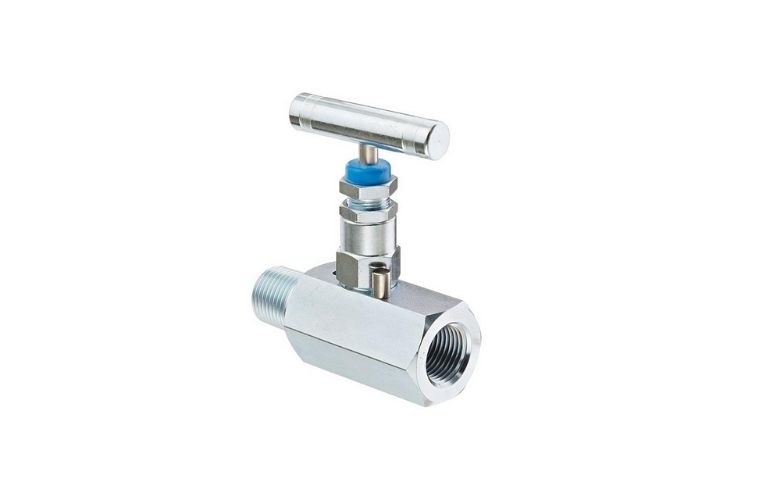
Needle Valves are also used in fuel injection systems and other high-pressure applications. Needle Valves are not recommended for use in applications where the fluid being controlled is corrosive or abrasive, as the small opening in the needle can become clogged quickly. Needle Valves are typically made of brass, stainless steel, or plastic.
Features
- Needle valves are installed in all machines, from cars to washing machines.
- They are used to regulate the flow of liquids and gases and come in various sizes and shapes.
- Needle valves typically have a cylindrical body with a stem that protrudes from one end.
- The stem is connected to a knob or handle, which is used to open and close the valve.
- Needle valves also have a seat where the sealing occurs.
- When the valve is closed, the needle rests on the seat, forming a seal.
- Needle valves are designed to be precise and can be used to control the flow of liquids and gases with great accuracy.
4.Check valve
Check valves are utilized in several applications to prevent backflow. They are commonly used in domestic and commercial plumbing to prevent sewage from flowing back up pipes. They are also used in irrigation systems to prevent water from flowing back into the water supply.
Check valves work by allowing fluid to flow in one direction only. When fluid tries to flow in the opposite direction, a flap or other mechanism is opened, It restricts yet permits the fluid to pass it from flowing back. Check valves have an open and shut configuration quickly and can be used with various liquids and gases.
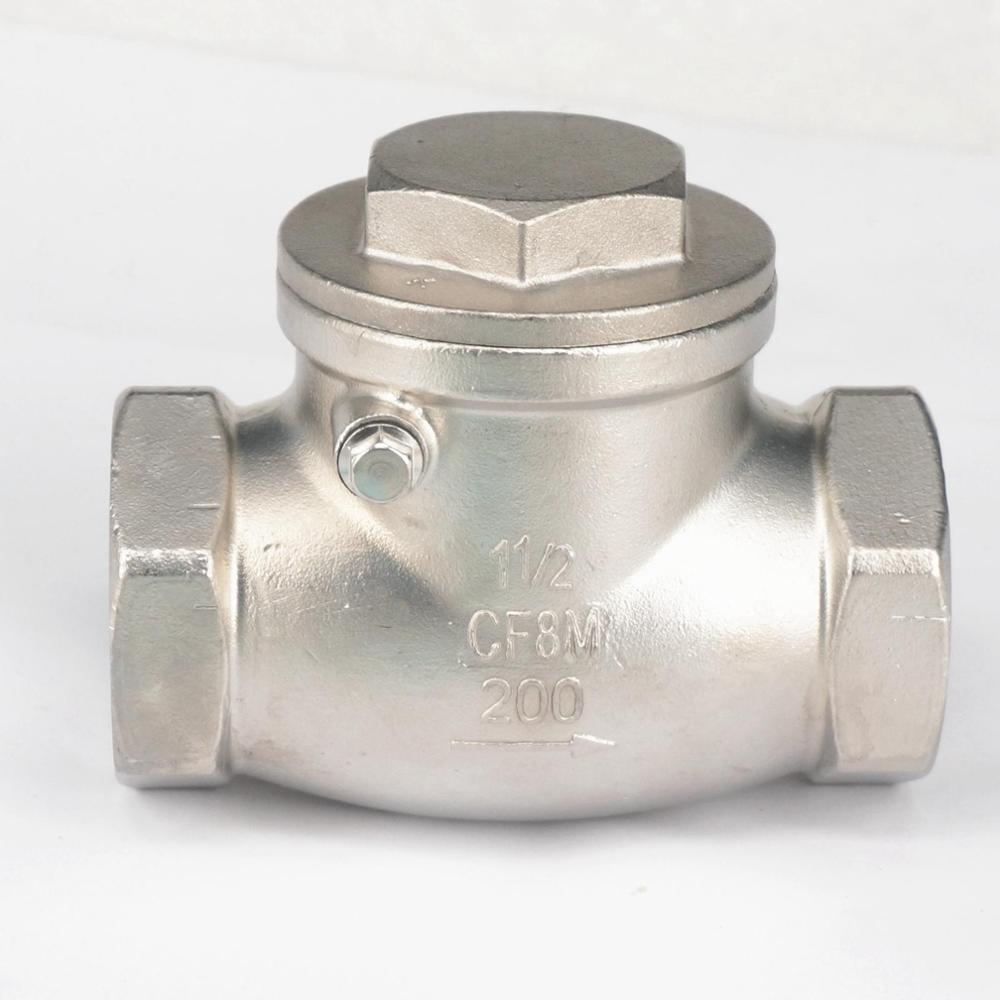
Features
- Check valves are an essential product in the fight against backflow. Check valves are installed in a piping system to allow flow in one direction only.
- Check valves prevent backflow by allowing forward flow only.
- Check valves typically have a flap or disc that closes when fluid flow reverses, preventing backflow.
- Check valves are available in a range of sizes and designs to suit any application. Check valve products are essential for many industries and have many applications.
- Check valves are crucial components in many systems and vital in the fight against backflow.
5.On Off Ball Valve
On/Off Ball Valves are one of the most commonly used in industrial and commercial applications. As the name suggests, On/Off Ball Valves are used to start or stop fluid flow in a pipeline.
On/Off Ball Valves are available in various sizes and materials, making them suitable for various applications. On/Off Ball Valves typically have two ports (inlet and outlet) and a ball with a hole in the center.
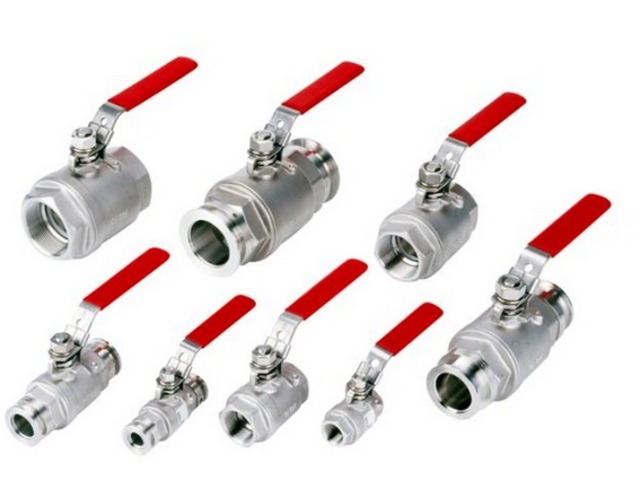
The handle “on” position causes the ball to be aligned with the ports, allowing fluid to flow through. The handle’s “off” setting causes the ball to be rotated, so the hole is blocked off, preventing flow. On/Off Ball Valves are easy to operate and can be installed in various pipelines.
Features
- On-Off Ball Valve is an essential household or business plumbing fixture.
- Its simple design consists of knob handles that control a ball inside the valve.
- Turning the knob or handle allows water to flow through the valve while turning it the opposite way shuts off the water flow.
- On Off Ball Valves are often used as shut-off valves for dishwashers, washing machines, and other appliances that require a water connection.
- They are also commonly used in irrigation systems to control water flow to crops or gardens.
- On Off-Ball Valves are durable and easy to use, making them a popular choice for home and commercial applications.
6.Multiport Valve Manifold
A multiport valve manifold is a device used to evenly distribute the flow of service in various directions. Multiport valve manifold is mainly used in the gas and liquid industries. Multiport valve manifold functions by using a central inlet and having several outlets around the circumference of the body.
Multiport valve manifold can be made from various materials, including metals, plastics, and composites. Multiport valve manifolds are used in many different applications where it is necessary to evenly distribute a service.
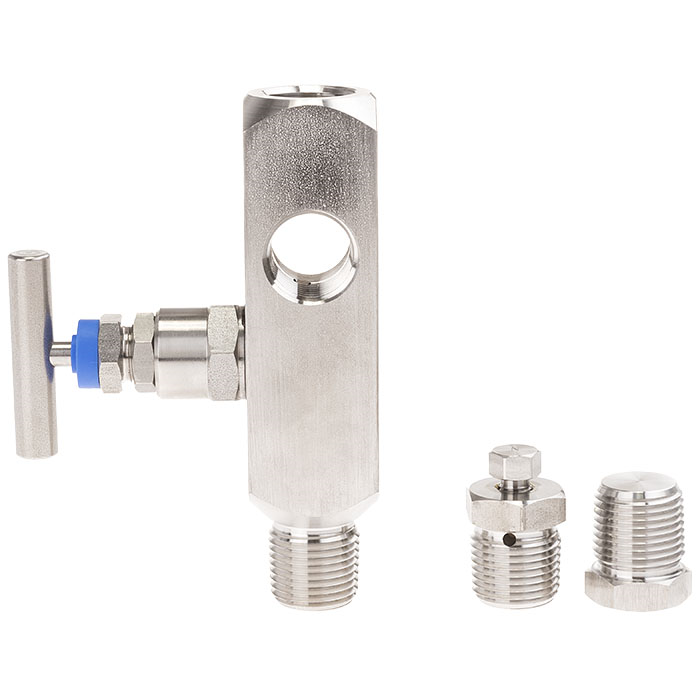
Examples of multiport valve manifolds include fire suppression, water treatment, and irrigation systems. Multiport valve manifolds are essential in many systems where it is necessary to evenly distribute a service.
Multiport valve manifold can be used in various applications, such as in industrial, automotive, and aerospace applications.
Multiport valve manifolds are available in various sizes and configurations to meet the needs of your application. Multiport valve manifolds are essential in many hydraulic systems and can provide years of trouble-free operation.
Features
- Multiport valve manifolds offer a variety of features that make them an ideal choice for a wide range of applications.
- They may be found in a range of sizes and combinations to suit any demanding project.
- Additionally, they feature a wide variety of port options, including threaded, sweat, and flange ports.
- This allows for easy installation and compatibility with a wide range of piping systems.
- Multiport valve manifolds have various control options, including manual, pneumatic, and hydraulic controls.
- They can thus be used in a variety of environments and applications. Contact your local supplier for more information on multiport valve manifolds.
- Multiport valve manifold is a Hydraulic Relief Valve that features an integrated pressure relief valve and check valve in a single body.
- Multiport valve manifolds are commonly used in applications where it is essential to protect equipment from over-pressurization.
- Multiport valve manifolds are typically used in systems where it is essential to maintain constant pressure, such as in a closed loop system.
7.Five Way Valve Manifold
Five Way Valve Manifold is a plumbing valve used to control the flow of water in a piping system. It is usually installed where the main water supply enters the house.
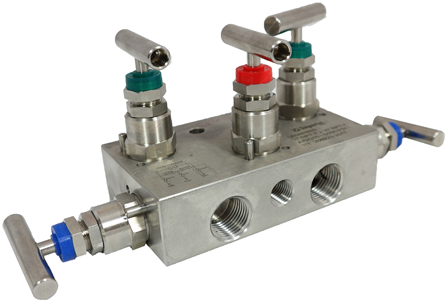
The Five Way Valve Manifold has five ports, or openings, that allow water to pass through. Each port is controlled by a separate handle, which can be turned to open or close the corresponding opening. The Five Way Valve Manifold is typically used to control water flow to different house areas, such as the kitchen, bathroom, and laundry room.
It may occasionally also be utilized to regulate the flow of hot and cold water to different fixtures. A Five Way Valve Manifold is a specialized valve used to control fluid flow in a piping system.
The Five Way Valve Manifold has five ports, each of which can be controlled independently. This allows the Five Way Valve Manifold to be used to direct the flow of fluid in a variety of different directions.
Features
- Five Way Valve Manifolds are often used in applications where it is necessary to control the flow of fluid in a precise and controlled manner.
- Five Way Valve Manifolds are available in various sizes and configurations, making them suitable for various applications.
- Five Way Valve Manifolds are essential to many industrial and commercial piping systems.
- The Five Way Valve Manifold is a versatile tool that can be used in various applications.
- The valve has five ports that can be used to connect hoses or pipes, and it also has a lever that allows the user to control the fluid flow between the ports.
- The Manifold can be used to connect two hoses, or it can be used to connect a hose to a pipe.
- The Five Way Valve Manifold is also equipped with a pressure relief valve, which helps to prevent damage to the Manifold if the pressure inside the system becomes too high.
- The Five Way Valve Manifold is an essential tool for anyone who needs to connect hoses or pipes, and it is one of the most versatile valves on the market.
8.Three Way Valve Manifold
Three Way Valve Manifold are devices used to control the flow of fluids in a piping system. They come in a variety of patterns and sizes and can be used in a wide range of applications.
They can control the flow of water, air, oil, gas, or other fluids. Three Way Valve Manifolds are often used with pumps, valves, and other devices to control the flow of fluids in a piping system.
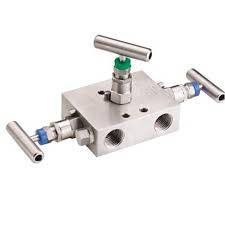
They come in a variety of materials, such as stainless steel, brass, bronze, and plastic. Three-Way Valve Manifolds can be operated manually or automatically. Three Way Valve Manifolds are often used in applications where it is necessary to control the flow of fluids in a piping system.
Three Way Valve Manifolds are used in various industries, including manufacturing, automotive, food and beverage processing, and oil and gas production. Three Way Valve Manifolds are an essential part of many piping systems.
Features
- Three Way Valve Manifold is a device used to control the flow of fluids. It is composed of three valves that are connected.
- The Three-Way Valve Manifold can be used to control the flow of water, air, or other fluids.
- Three-Way Valve Manifolds are often used in industries where the flow of fluids needs to be controlled.
- The Three-Way Valve Manifold is an important device that helps regulate fluid flow in an industrial setting.
- Three-Way Valve Manifolds are available in a variety of sizes and configurations. Three Way Valve Manifolds can be customized to meet the specific needs of an industrial application.
- Three Way Valve Manifolds are an essential part of an industrial facility.
9.Two Way Valve Manifold
A Two-Way Valve Manifold is a device used in various industries to control the direction of fluid flow. It is also known as a two-way valve or a two-way check valve. The Two-Way Valve Manifold consists of two or more valves connected.
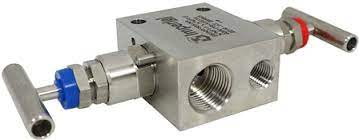
The Two-Way Valve Manifold allows fluid to flow in one direction only. When the Two-Way Valve Manifold is opened, the fluid flows from the first valve to the second valve. When the Two Way Valve Manifold is closed; the fluid does not flow from the first valve to the second valve. The Two-Way Valve Manifold is used in various industries such as chemicals, pharmaceuticals, food and beverage, and water treatment.
Features
- Two Way Valve Manifold is an essential feature for many industries.
- It allows isolation of any process line from the rest of the system by manually operated valves.
- Two-way valve manifold can also operate process lines in series or parallel.
- A two-way valve manifold is also known as a two-position valve manifold.
- Two-way valve manifold has two identical ports opposite each other.
- Two-way valve manifold is a very versatile product, and it can be used in several sectors, including the oil and gas, food and beverage, pharmaceutical, and chemical industry.
- Two-way valve manifold can be used for instrumentation, sample analysis, or simple on/off applications.
- Two-way valve manifolds are available in various sizes and materials. Two-way valve manifolds are easy to install and maintain. Two-way valve manifolds are cost-effective, and they have a long working life.
- It is an essential product for many industries, and it is essential to choose the right two-way valve manifold for your application.






